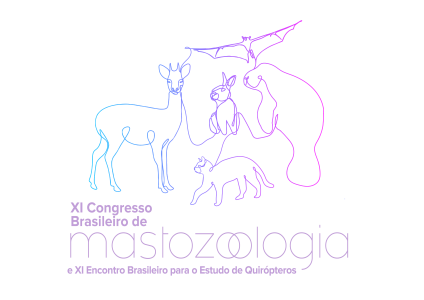Dados do Trabalho
Título:
MAMMAL ROAD MORTALITY ALONG ROADS IN PARANA STATE, BRAZIL
Resumo:
Road networks are the main transportation system for people and goods in Brazil. Although its relevance for socio-economic development, it can cause different impacts, such as wildlife-vehicle collisions. From the biodiversity conservation perspective, road mortality is one of the causes of population decline and species extinction. Some accidents involving large mammals also cause damages to the property and severe human injuries. For this reason, it is important to investigate the species related with vehicle collisions and its temporal and spatial distribution to invest in landscape planning and mitigation measures. This study aims to present preliminary results of a roadkill monitoring for medium and large size mammals in the region of Telêmaco Borba, Paraná, South Brazil. Paraná State is the fifth largest economy in Brazil, operating from the production of grains (e.g. soy and corn), industrial inputs (e.g. paper and celullosis) to durable goods (e.g. vehicles). We monitored an average of 1734 km of roads per month from March to May/2022, totalizing 5202 km and 35 days. We traveled the road by car in a constant speed and recorded all carcasses we found and live animals seen interacting with the road. We classified records of roadkill and sight in systematic or opportunistic events to avoid overestimation. Systematic records were used to estimate animal roadkill and sight, while both opportunistic and systematic records were used to complete the list of species interacting with roads. In total, we recorded 91 events involving wild mammals, of which 67 (73.63 %) were systematic and 24 (26.37%) were opportunistic. We found at least 14 species of wild mammals in interaction with roads. Two of our recorded species (Puma concolor and Sylvilagus brasiliensis) are threatened with extinction. We systematically collected 52 records of mammal roadkill. The most roadkilled order was Didelphimorphia with 21 (40.38%) records, followed by Carnivora with 12 (23.07%) records. In terms of species, the most roadkilled were Didelphis albiventris (11 records; 21.15%), followed by Nasua Nasua and Dasypus novemcinctus, both with four records (7.69%). From 15 systematic records of mammal sight, nine (60%) belongs to Carnivora order, however the most sighted mammals are classified in the genus Mazama sp (four records; 26,67%). Based on our results, most of species interacting with roads are generalists and they were found foraging close to the roads, moving or crossing the roads. Among the wild species, we highlight Didelphis albiventris, which is already known as the most roadkilled mammal in South Brazil. Our study is among the few studies investigating mammal roadkilling in Paraná, an important state where Atlantic Forest is remaining. We expect our future results may support a robust mitigation plan for this region, contributing to mammals’ conservation.
Financiamento:
Área
Conservação
Autores
Beatriz Lopes, Letícia Prado Munhoes, Paula Ribeiro Prist, Sheron Sanches Sierakowski, Amadeus Vaclav Bicalho Horta Portela, Tainara Santana Galvão da Silva, Paulo Henrique Schimidlin, Fernanda Delborgo Abra
